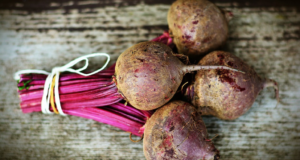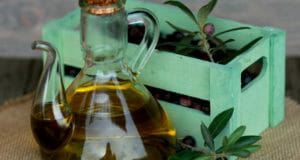
All natural itch relief for those summer time irritations can sure come in handy.
Itchiness is a miserable symptom. Summer is the time for skin irritants such as insect bites, poison ivy, and poison oak. However, children may get chicken pox at any time of the year. Fortunately there are some easy home remedies that work very well to relieve itching and dry up lesions.
Unless the affected area is very small, such as one bee sting, I generally like to use both internal and external remedies.
There are some wild plants that can be picked, crushed, and immediately placed on the affected area. In a pinch, the herbs can even be chewed and placed directly on the skin, forming an herbal poultice.
Plants Can Relieve Itching
Jewelweed, also known as touch-me-not, is an excellent skin soother. Jewelweed is mucilaginous, so it is very cooling. In addition, if the flowers have gone to seed and the victim is a child, the child can be distracted from the affliction by holding the seedpods of the plant. The pods burst open when touched. Children tend to be amused by the mini explosions. Any part of the plant is useful, but the thick hollow stems are the best. Other mucilaginous choices are comfrey, plantain, chickweed, calendula, and cleavers.
I always keep good quality commercial witch hazel on hand. You can make your own by chopping up witch hazel root and covering it with alcohol. Shake it daily for at least two weeks, then strain. I find the commercial variety just as good as my homemade kind, however. (Witch hazel can be applied straight to hemorrhoids by the way. It is astringent and shrinks any areas of inflammation.)
The hidden secrets of making herbal medicines…right at your fingertips!
Clay
Dried clay is clean and inexpensive. It keeps indefinitely. You can purchase it by mail or in natural food stores. Several kinds are available. The strongest and most drying are red or green clays. Bentonite and kaolin work well also. Bentonite and kaolin are less expensive and easier to find.
Miraculous Green Clay All Natural Healing Secrets
Oatmeal soothes Itching Naturally
Ordinary oatmeal is soothing, especially when added to a tepid bath. If putting oatmeal in the tub, either blend it into a fine powder with a blender or coffee grinder or tie it up into an old cloth so it does not cling the bather and the tub. Always use tepid or cool water when itching is a problem, as hot water can promote more itchiness.
Oils Help Relieve Itching
The Essential oil of peppermint is very strong, but very cooling. It must be diluted prior to using. Diluted tea tree oil may be used if open lesions are present or if the lesions are on a child. I have sometimes used it straight on myself. Both are antibacterial.
Recipe For Topical Natural Itch Relief
Here is a topical preparation to keep on hand. Blend ¾ cup dried clay with ¼ cup powdered oatmeal. Add 2 drops of peppermint essential oil. Keep in a jar in a cool dark place. When needed, combine the powder with enough witch hazel to make a thick paste. This is called a plaster. The plaster will feel cool and dry the lesions. Wash the area prior to applying the preparation. Gently pat dry, then apply to the irritated area as needed. Feel free to vary the recipe with whatever you have on hand. If peppermint oil is unavailable, you could add about 1 tablespoon of finely powdered dried peppermint leaf.
Tips To Help Relieve Itching
Try not to scratch the lesions. In the case of poison ivy, poison oak, or poison sumac, you could spread the rash. Use good hand-washing techniques.
Itching can make a person feel irritable and miserable all over. Chamomile, red clover, mint, or linden tea can be brewed and consumed freely as desired. Calendula flower may be added as well. Simply pour 1 quart of water over 4 heaping teaspoons of any one or combination of the herbs to make a soothing and tasty tea. If using fresh herbs, use a total of four tablespoons of plant matter. Let the tea steep covered for at least twenty minutes. Strain out and compost the herbs.
Inflammatory responses stress the liver. A decoction of burdock root, elecampane root, licorice root, sassafras bark, or dandelion root may be made by simmering four heaping teaspoons of the dried herbs in 1 quart of water. Strain and drink as above.
Meadowsweet herb, willow bark, and birch bark contain aspirin-like compounds that may help to soothe inflammation. Any of those herbs may be included in the tea blends as well.
Diet Recommendations
Keep the diet simple. Avoid sweets and spicy foods. If the irritation is wide spread, encourage napping, as sleep may be disrupted. Keep the room temperature cool. Some people find that a fan is soothing. Drink lots of fluids.
See a health care practitioner if the irritation is widespread, on the face, or not improving. Consult with a health care provider prior to implementing home remedies for children under age two. Do not use any of suggested recipes in the eyes or on mucus membranes.
Even though itching is extremely uncomfortable, skin afflictions usually resolve completely. Home remedies can be effective treatments themselves or serve as adjuncts to conventional measures.
Do you have any other tips for all natural itch relief? Please share in the comments below.
 Off The Grid News Better Ideas For Off The Grid Living
Off The Grid News Better Ideas For Off The Grid Living



